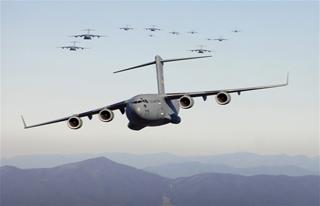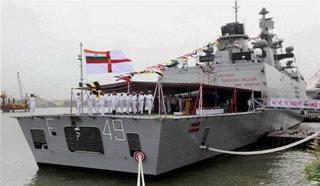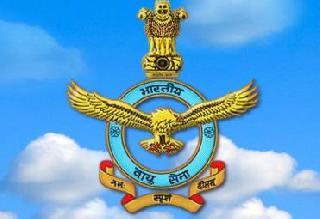
A file photo.
WASHINGTON (PTI): The US has submitted a list of 10 defence technologies for transfer to India, bringing it into a small group of closest allies with which America shares such sensitive details without export control.
Informed Indian sources confirmed to the PTI that the Pentagon has submitted a list of 10 sensitive technologies for transfer from US to India.
New Delhi is "reviewing" these offers and would get back to the United States soon, with its response, they said.
Meanwhile, the US has sought opinion from its strong defence industry to identify next set of technologies which could be shared and transferred to India.
According to US sources, the number of such defence technology transfers could cross 90.
Deputy Secretary of Defence Ashton Carter, who is leading unleashing of the defence ties between India and the US through the Defence Trade and Technology Initiative, said the US has submitted a white paper explaining where India falls within US export control system.
"The paper we sent them covered several key areas from export controls rules themselves to end use monitoring and the need to identify proposals for co-production and co-development," he said at the Center for American Progress.
"We have demonstrated repeatedly that we can release sensitive technology to India. We've adapted our system in ways that will speed our release process for India, especially in the Department of Defence, recognising that for, of course, all partners, this process is subject to case-by-case review and there will always be some technologies that we will keep to ourselves," Carter said.
"We changed our mindset around technology transfer to India in the Department of Defence from a culture of presumptive no to one of presumptive yes," he said.
Asserting that India has been brought at part with closet of its allies, Carter said the Obama Administration has now included India in the list of "so called Group of Eight" that receives the best of the technologies without export control.
Prime Minister Manmohan Singh, who recently met US President Barack Obama, has said steps have been taken to expand the Indo-US ties and move away from a buyer-seller cooperation to joint development and production in the field of defence.
The Commerce Department and the State Department grants preferential categorisation under the US strategic trade authorisation (STA), which authorises license exceptions for the export of many items on the commerce control list.
"Specifically, under STA, there are a small number of items that can only be exported without a license to a select group of favoured nations. This so-called Group of Eight now includes India," he said.
"We continue to vigorously support India's efforts to join the four major international export control regimes in a phased manner, and India's already taken positive steps in this regard. We've also focused on clarifying old misperceptions and generated creative workarounds to potential points of friction," Carter said.
The top Defence Department official said the US continues to vigorously support India's efforts to join the four major international export control regimes in a phased manner, and India's already taken positive steps in this regard.
"We've also focused on clarifying old misperceptions and generated creative workarounds to potential points of friction. For example, we've clarified with our Indian partners the universal applicability of certain laws related to our exports that they believed applied only to them, such as end use monitoring, which we use even with our closest partners and allies," he said.
"We also decided with India that the conclusion of certain agreements, such as those that regulate communications interoperability, the so-called GSOMIA logistics support, the LSA and so forth, although potentially beneficial, should not serve as obstacles to progress with India," he said.
The US is also trying to find ways to make the licensing procedures more flexible.
"We've also taken unprecedented steps to identify forward-leaning proposals by industry from industry on both sides for defence items to be co-produced and, the true measure of our common goal, co-developed by the US and India," he said.
"These include a maritime helo, a naval gun, a surface-to-air missile system, and a scatterable anti-tank system, all of which I discussed with my Indian interlocutors during my trip," said Carter.
In each instance, the US has fast-tracked these projects to ensure that the internal processes are ready to go as soon as the Indian government wants to move forward, he noted.
The US has also identified the critical role played by research and development experts and identified several thematic areas, including cognitive sciences, autonomy, and many others, in which they would incentivize increased cooperation by US defence researchers.
India has a world-class defence researchers, just like they have world-class commercial innovators, he added.
 Previous Article
Previous Article Next Article
Next Article












The Indian Air Force, in its flight trials evaluation report submitted before the Defence Ministry l..
view articleAn insight into the Medium Multi-Role Combat Aircraft competition...
view articleSky enthusiasts can now spot the International Space Station (ISS) commanded by Indian-American astr..
view article